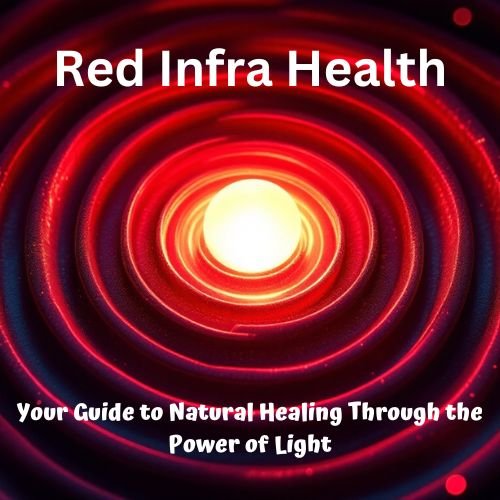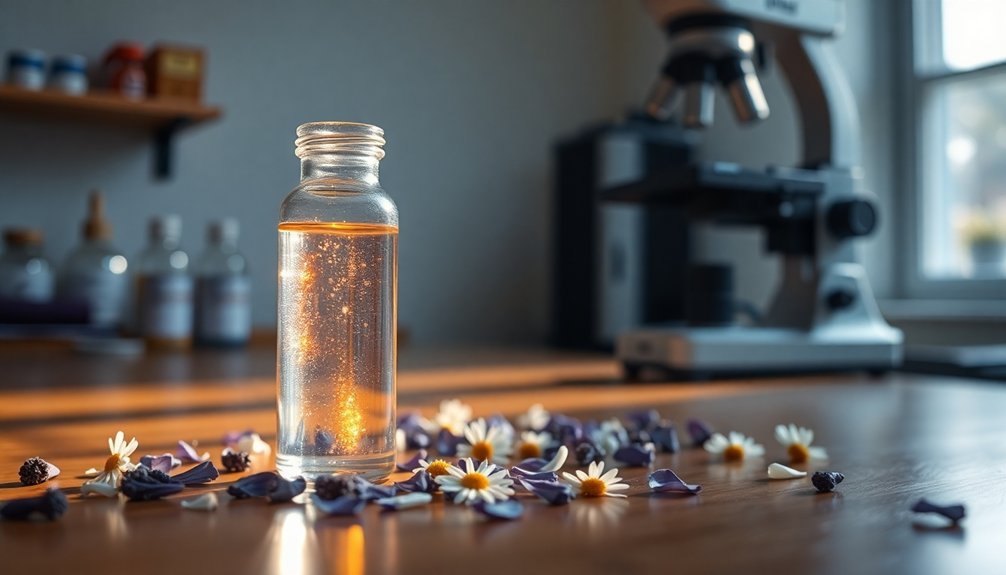You can naturally reverse postpartum hair loss with three proven approaches. Start with gentle scalp stimulation through 5-10 minute circular massages 2-3 times weekly, which increases blood flow to your follicles. Next, boost your nutrition by consuming iron-rich foods, omega-3 fatty acids, and collagen-supporting nutrients like berries and leafy greens. Finally, implement red light therapy using FDA-cleared devices, which can increase hair density by up to 35% after consistent use. These science-backed methods work together to create ideal conditions for your hair to regain its pre-pregnancy fullness – and there's even more you can do to speed up your recovery.
Red Light Treatment Basics

A promising solution for postpartum hair restoration, red light therapy works by directing specific wavelengths of light (600-950nm) to your scalp. This non-invasive treatment stimulates your hair follicles by increasing blood circulation and boosting cellular energy production.
As the light penetrates your scalp, it enhances the delivery of oxygen and nutrients to your hair follicles while reducing inflammation that might be hindering hair growth. FDA-cleared devices have shown a 35% increase in hair density after 16 weeks of consistent use.
You'll find that red light therapy's effectiveness stems from its ability to boost ATP production in your cells, basically providing more energy to your hair follicles. It also activates stem cells within the follicles, encouraging your hair to enter and maintain its growth phase.
The treatment works at a cellular level to create ideal conditions for new hair growth while helping to prevent further hair loss.
You can access this treatment through various LED devices designed specifically for at-home use, like LED hair growth helmets and masks. These user-friendly tools make it convenient to incorporate red light therapy into your daily routine.
While it's a safe and well-tolerated treatment, you should consult with a healthcare provider before starting, especially during your postpartum period.
Scalp Stimulation Techniques
While red light therapy offers technological support for hair restoration, simple hands-on techniques can be equally powerful. By incorporating regular scalp massages into your routine, you'll boost blood flow to your hair follicles, providing them with essential oxygen and nutrients they need to thrive. Most women experience peak hair shedding four to six months after delivery, making this an ideal time to begin scalp massage treatments.
| Technique | Method | Benefits |
|---|---|---|
| Circular Motion | Use fingertips to make gentle circles from front to back | Increases circulation and reduces tension |
| Pressure Points | Apply targeted pressure with finger pads on both sides | Stimulates follicles and promotes growth |
| Oil-Enhanced | Combine with carrier oils and essential oils | Nourishes scalp and enhances massage effects |
To perform an effective scalp massage, use your fingertips to make small, circular motions, starting at your hairline and working toward the nape of your neck. You'll want to spend 5-10 minutes on this practice, focusing on areas where you feel tension. For best results, try adding essential oils like rosemary or peppermint to a carrier oil such as jojoba or coconut oil. Perform these massages two to three times weekly, and you'll likely notice improvements in both hair density and overall scalp health.
Nourishing Your Hair Naturally

Nourishing your hair naturally requires a holistic approach that combines proper nutrition with targeted supplementation.
You'll want to focus on consuming iron-rich foods like lean meats and spinach, while incorporating plenty of omega-3 fatty acids to reduce hair thinning. This common condition affects over 90% of new mothers after childbirth.
Include vitamin C-rich foods such as broccoli, kale, and citrus fruits to boost collagen production and enhance iron absorption.
Don't overlook the power of natural hair care products. You can massage coconut oil into your scalp to improve blood flow and encourage hair growth.
Consider trying honey-based shampoos, which offer antifungal properties and may help with scalp issues.
For a budget-friendly option, you can create homemade hair masks using ingredients like avocado and eggs.
If your diet needs support, consider taking supplements strategically. Prenatal vitamins can be beneficial, especially if you're breastfeeding.
You might also need iron supplements if your levels are low, or vitamin D supplements if you're deficient.
Focus on consuming collagen-boosting foods like berries and leafy greens, along with zinc-rich proteins such as organic red meat and fish, to maintain strong hair structure.
Frequently Asked Questions
Can Hair Dye Affect Postpartum Hair Loss or Regrowth?
Hair dye won't directly affect your postpartum hair loss or regrowth, as these are primarily hormone-driven. However, you should choose ammonia-free dyes to avoid weakening your hair during this sensitive period.
How Long Should I Wait After Delivery Before Getting a Haircut?
You'll want to wait at least 3-4 months after delivery, when peak shedding starts to taper off. Getting a haircut at 6 months postpartum is ideal, when your hair loss begins normalizing.
Does Breastfeeding Contribute to Continued Hair Loss After Pregnancy?
While breastfeeding doesn't directly cause hair loss, it can prolong your shedding period due to ongoing hormonal changes. You'll notice this is part of your body's natural postpartum process, not the breastfeeding itself.
Can Birth Control Pills Help Regulate Postpartum Hair Loss?
Birth control pills won't prevent your postpartum hair loss, and they may actually trigger more shedding. You'll find better results focusing on lifestyle changes, proper nutrition, and consulting your doctor for targeted hair loss treatments.
Should I Avoid Swimming Pools During Postpartum Hair Loss Recovery?
Yes, you should avoid swimming pools during postpartum hair loss, as chlorine and other chemicals can worsen your hair's condition. If you must swim, use a swim cap and apply protective products beforehand.
In Summary
You've got several effective natural options to restore your postpartum hair loss. Whether you're using red light therapy to stimulate growth, practicing regular scalp massage to increase circulation, or nourishing your hair from within through proper nutrition, these methods work together to support your hair's recovery. Start with one technique and gradually incorporate others – you'll likely see improvements within a few months of consistent practice.





Leave a Reply